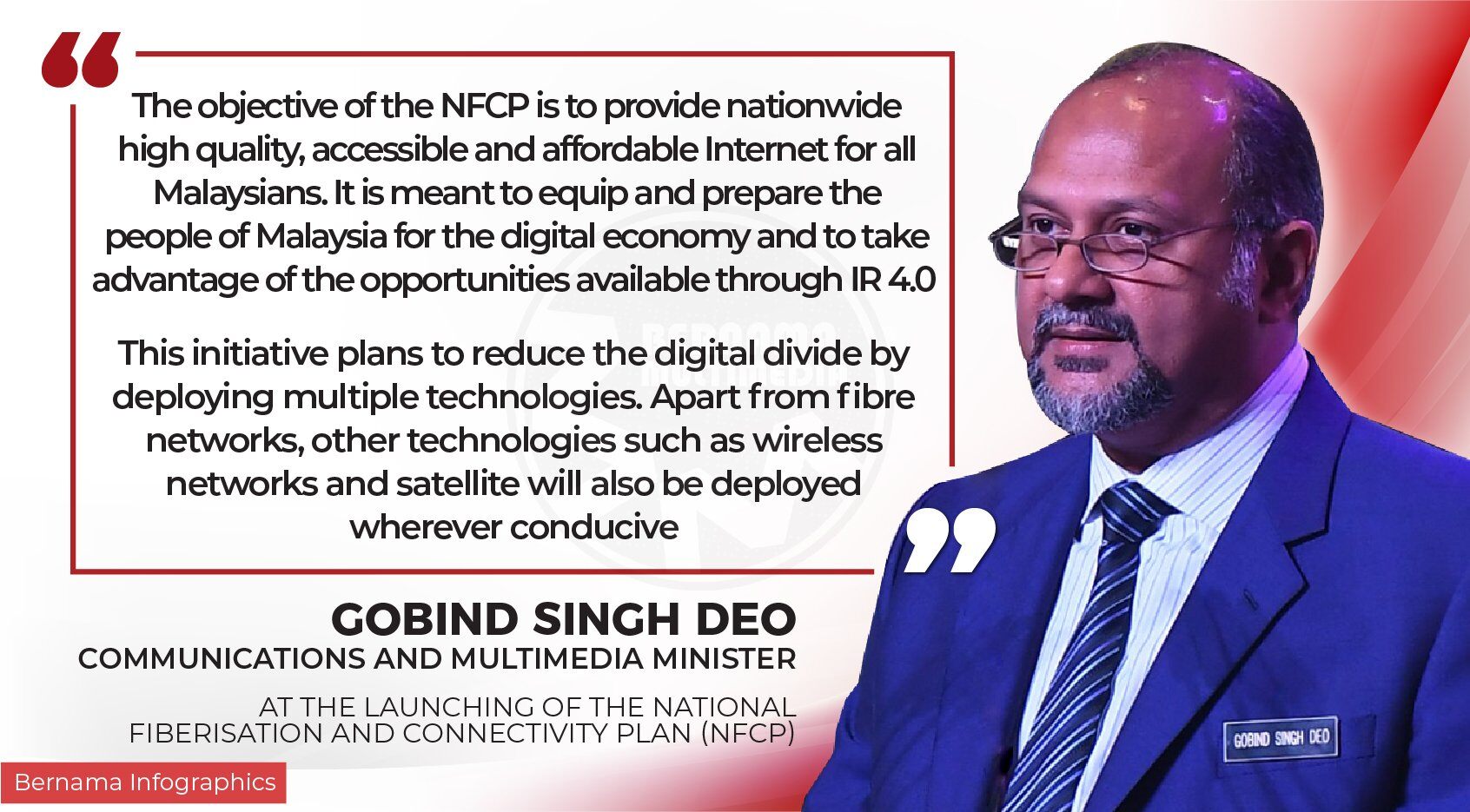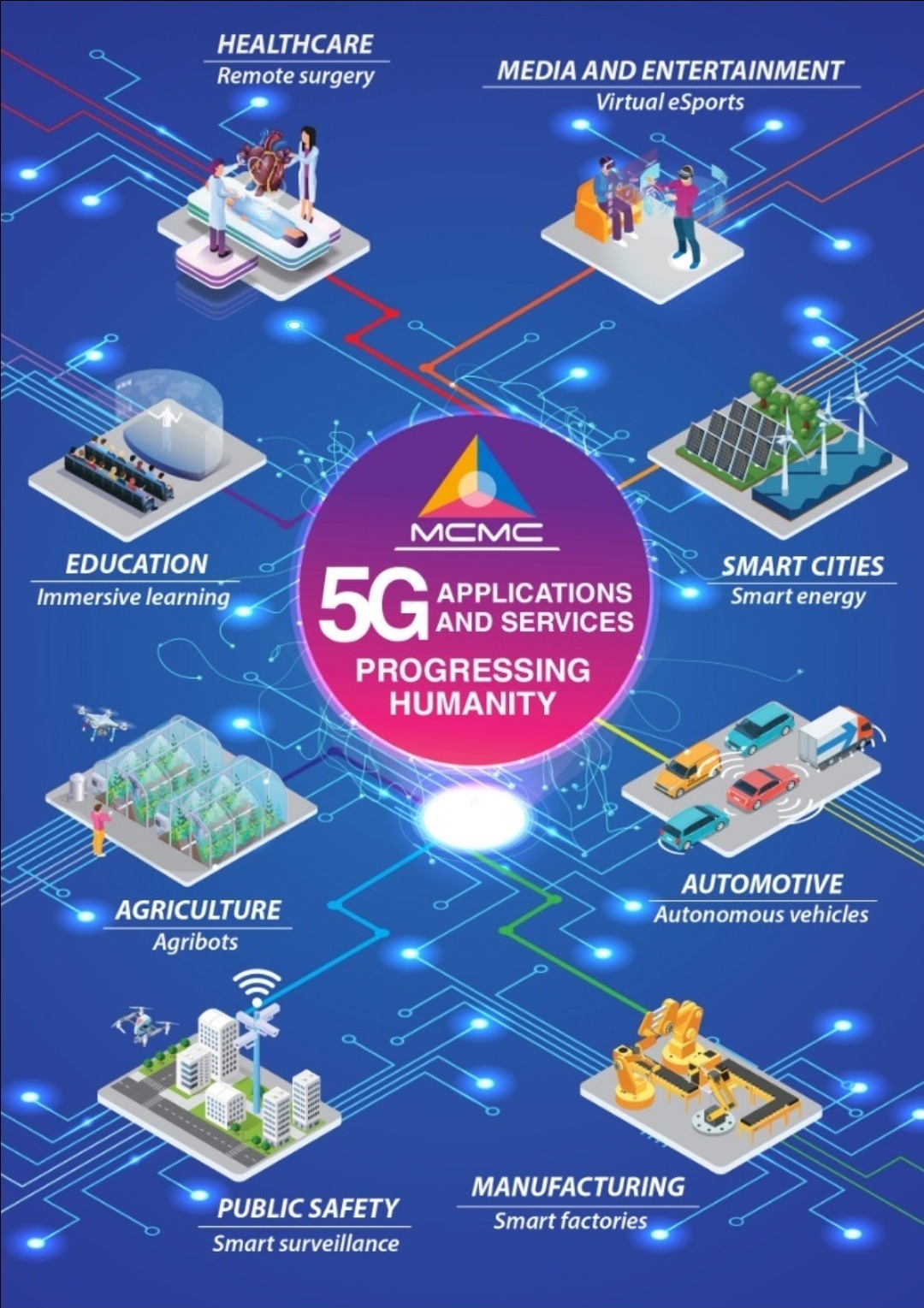The National Fiberisation and Connectivity Plan (NFCP) is a dynamic five-year government plan, spanning from 2019 to 2023, to provide sustainable, comprehensive, high quality and affordable digital connectivity to the nation. It prioritises the provision of sustainable digital infrastructure, primarily based on a fibre optic network, and other technologies such as wireless and satellite.
NFCP will be implemented at a cost of about RM21.6 billion over the 5 years. Between RM10 billion to RM11 billion will be provisioned from the Universal Service Provision (USP) Fund, managed by the Malaysian Communications and Multimedia Commission (MCMC), and the rest will be funded commercially by the capital expenditure of telecommunications companies (telcos) in Malaysia.
In preparing the nation for the Industrial Revolution 4.0, the NFCP seeks to “bridge the digital divide” between the rural and urban areas in Malaysia — aiming to provide more equal opportunities for citizens and provide a conducive environment for the use of new technologies such as 5G. Around 20,000 jobs could be created as well, with opportunities spread across the construction, operation, and maintenance of the digital infrastructure.
There are seven main NFCP targets:
- To have an entry-level fixed broadband package at 1% of the Gross National Income (GNI) by 2020.
- To have Gigabits (Gbps) availability in selected industrial areas by 2020, and all state capitals by 2023.
- 100% availability for premises in state capitals and selected high impact areas—with a minimum speed of 500Mbps.
- 20% availability for premises in sub-urban and rural areas with up to 500Mbps by 2022.
- For fibre networks to cover 70% of schools, hospitals, libraries, police stations, and post offices by 2022.
- Average speeds of 30Mbps in 98% of populated areas by 2023.
- To improve mobile coverage along the Pan Borneo Highway (upon completion).






